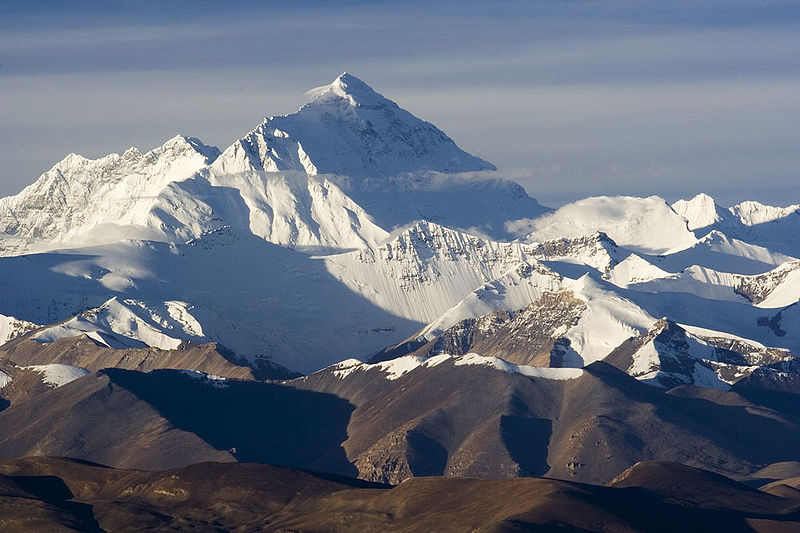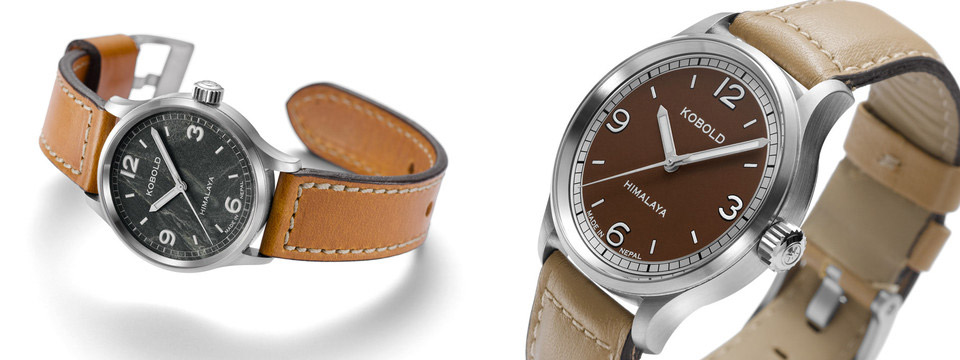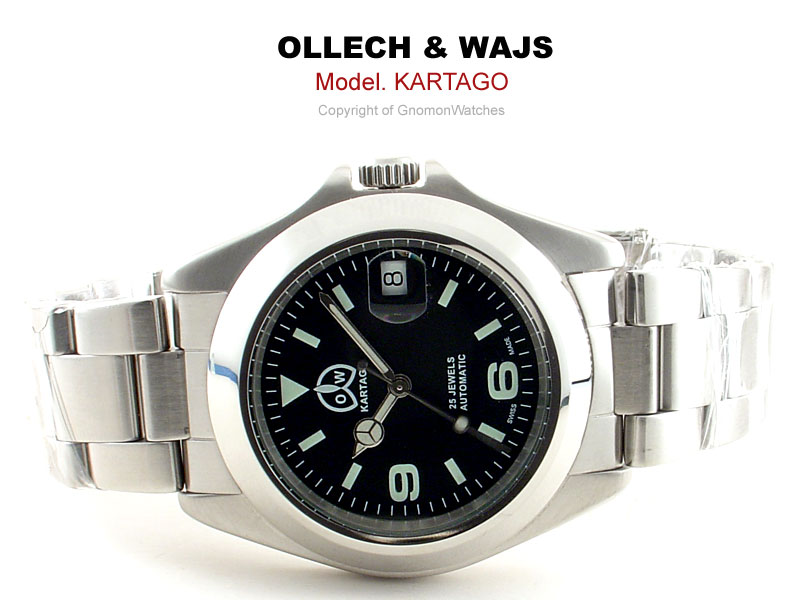As for me, I am tormented with an everlasting itch for things remote. – Herman Melville, Moby Dick
Man will always be driven by a desire to extend beyond. The point where this ends and beyond begins is relative to the path of a person. The lesson, I think, is in our never losing our will to explore, to discover, to conquer the understanding of a thing.
There are names easy to recall – Hillary, Earhart, Glenn – for whom beyond surpasses the physical. It is not merely a location. It is tribute to what man can do if properly motivated.
Perhaps exploration is physiological, in our DNA – omnipresent in some, but there in quantity in all of us. For watch lovers, this is why we furiously pursue models filled with either a history of being taken to the ends of the earth or the gadgetry to effectively get you there and back. Or both.
To fully explore this connection, we’ll be doing a three-part series about watches and exploration: Part One – Higher Ground, Part Two – The Deep, and Part Three – Wild Blue Yonder.
Don’t be surprised if before you’re finished reading this series you’re ready to strap on a timepiece and take off on an adventure!
PART ONE – Higher Ground
By now most people know that Sir Edmund Hillary donned a Rolex as he and Sherpa Tenzing Norgay made their historic summit assault on Mount Everest in 1953. And though the company’s Explorer 1 became an icon as a result, Hillary was not actually wearing that model as he navigated the “Roof of the World”. That matters little, really. The impressive feat is any watch surviving the conditions that exist at 29,000 feet – over five miles in the sky.
To stop and think of that, it’s truly mind blowing. Next time you’re on an airplane and the pilot let’s you know you’ve reached your cruising altitude of 30,000 feet, just imagine being outside and that might add perspective.
The temperature never gets above freezing and averages about minus-18 degrees in the warm months. May is the optimal summit time, and the winds die down to about 20-30mph. If climbers are sitting, waiting to possibly summit and the wind is clipping any higher; they simply have to chalk all their effort and considerable financial investment up to a good story.

But it’s not just the weather; it’s your own body that’s a great risk at 29,000 feet. About a third less oxygen exists for you to breathe than you would at sea level. As an example of the impact, the average person will take about 20-30 breathes a minute at sea level – on Everest, that figure climbs to 80-90 breathes a minute. Climbers spend a great deal of time acclimating to the conditions so they can have a hope of surviving the ordeal. If someone were to magically pluck you from your home and place you on top of Everest without the benefit of time to adjust to the climate, you’d pass out in two to three minutes.
Still, a watch can survive.
Today, that might not seem like such an amazing thing. Anyone with a cursory knowledge of watches knows that current timepieces that can withstand all kinds of pressure – and do so while providing you endless amounts of information. Such technical advances seem, well, commonplace in today’s environment.
That’s why Rolex’s ability to make a watch that could get to the highest point on earth and back without being the worse for wear – in 1953 – is indeed an achievement. If your watch lust is a meritocracy on any level, you’d be hard pressed not to see reaching such heights (literally) as impressive. Also, when you’re wondering why on earth such companies charge such prices, remember the lineage of innovation is an invisible line on the receipt.
Rolex is the torchbearer when it comes to aligning itself with adventurers of all types, but certainly not the only company to put its products to the test in the most extreme environments.
 In fact, American watch manufacturer Kobold essentially put all its eggs in the basket of watches built for exploration. Founded in 1998 by then-19-year-old Michael Kobold, the Pittsburgh-based watch company decided to build its business model around tool watches designed to survive the most difficult conditions on earth. Not only are Kobold’s constructed to survive – because survival is not enough – but to enable those who wear them to utilize the watches practically in the field.
In fact, American watch manufacturer Kobold essentially put all its eggs in the basket of watches built for exploration. Founded in 1998 by then-19-year-old Michael Kobold, the Pittsburgh-based watch company decided to build its business model around tool watches designed to survive the most difficult conditions on earth. Not only are Kobold’s constructed to survive – because survival is not enough – but to enable those who wear them to utilize the watches practically in the field.
World-renowned explorer Sir Ranulph Fiennes is the chief brand ambassador for Kobold and may be the only celebrity endorser ever to leave Rolex for another watchmaker – and that’s a significant matter. Fiennes’ relationship with Michael Kobold goes beyond wearing his watches, as well. The pair buddied up on an Everest climb, failing initially before returning to complete the feat. It shouldn’t go unnoticed when a watch company founder who builds watches for explorers actually, well, goes exploring. Like brand history playing a role in pricing with Rolex, Kobold’s Everest-conquering hobby adds a certain element to the watches – and therefore the price.
Fiennes’ relationship with Michael Kobold goes beyond wearing his watches, as well. The pair buddied up on an Everest climb, failing initially before returning to complete the feat. It shouldn’t go unnoticed when a watch company founder who builds watches for explorers actually, well, goes exploring. Like brand history playing a role in pricing with Rolex, Kobold’s Everest-conquering hobby adds a certain element to the watches – and therefore the price.
But, in the case of Kobold, the company didn’t just build a watch that could thrive on Everest – it brought watch making to Everest.
While climbing with Fiennes, Kobold noted his ability to survive was not just enhanced by the Sherpa who assisted his team, but out-and-out dependent upon it. At Fiennes suggestion, Kobold took the two Sherpa who assisted him during his Everest ascents back to Pittsburgh with the intention of teaching them to make watches.
It worked. Now, in Katmandu, in the shadow of Everest, Kobold is building watches with two men – Thundu Sherpa and Namgel Sherpa – who have climbed Everest a combined total of 16 times. It must be satisfying to see a watch face with “Made in Nepal” on its dial and knowing the watch has been carefully crafted by Sherpa who know a thing or two about exploration.
Though Rolex and Kobold are but two examples of watchmakers who embrace exploration and represent it strongly in their offerings – many other makers and brands strive to construct watches built for adventure.
 I could list hundreds, probably, but three in particular that caught my attention were the Casio Pathfinder Tool Triple
I could list hundreds, probably, but three in particular that caught my attention were the Casio Pathfinder Tool Triple
The Pathfinder is equipped with a compass, altimeter, stopwatch, barometer and thermometer – all things one might find useful on the trail. And for around $200, far more affordable than Hillary’s Rolex or Kobold’s Himalaya model.
 The Victorinox SC 1000 ($395) has a unique feature in that its bezel flips up to reveal a solar compass which points to true north, not magnetic north. Again, that’s a useful tool to help even the most casual of explorers, even if you’re only navigating the suburbs.
The Victorinox SC 1000 ($395) has a unique feature in that its bezel flips up to reveal a solar compass which points to true north, not magnetic north. Again, that’s a useful tool to help even the most casual of explorers, even if you’re only navigating the suburbs.
Finally, the Timex. Who doesn’t like a good Timex? The Intelligent Altimeter ($225) can do many things, including minimum and maximum altitude recall, and it has the faithful Timex Indiglo backlight – so what’s not to like? Useful complications always provide a stronger connection to a watch and the Timex Intelligent Altimeter is loaded with them – some which would be an asset on any trail.
Useful complications always provide a stronger connection to a watch and the Timex Intelligent Altimeter is loaded with them – some which would be an asset on any trail.
However, if you’re simply interested in owning a watch that pays tribute to the famous Rolex Explorer 1 you are in luck, because there are many good options at multiple price ranges.
Ollech & Wajs Kartago (seemingly discontinued) can be had on the used market for around $200-plus and definitely takes its style cues from the Explorer 1. The Everest by Smiths can be found for just shy of $300 dollars and certainly has the look and feel of an Explorer 1, even if it’s a larger watch in general. Most in-the-spirit-of watches made today will likely cater to the sizing-up trend, so it’s not odd to find an homage that’s, say, 40mm or larger.
An exception might be the Zeno Watch Basel Explorer (discontinued) which stays true-to-size at 36mm. A handsome, faithful homage, the Zeno Explorer can be found by scouring the watch forums and likely picked up for a fair price.
 For a bit more money is the MKII Vantage (discontinued) – a faithful representation of the Explorer 1 and, given its providence, a fantastically built watch.
For a bit more money is the MKII Vantage (discontinued) – a faithful representation of the Explorer 1 and, given its providence, a fantastically built watch.
Essentially, there is no shortage of options when it comes to satisfying your yen to explore – even if it’s simply navigating office cubicles and telling your coworkers the barometric pressure of the break room – doing so with capable timepiece on your wrist is all the more enjoyable.
However, being able to communicate to you the temperature or calculate the wind speed from my watch is a neat, but I think it’s important when thinking of watches and how they assist us in pushing the limits of what’s perceived possible to remember their most singular complication – time. For there is no more useful thing a watch can do than make us aware of the time we’ve spent and, indeed, the time we have left.
And that is no more important on the top of Mount Everest than it is sitting in your living room, enjoying your evening.
Up Next: Exploration Part II – The Deep
by JJ McDowell









 Featured Videos
Featured Videos










